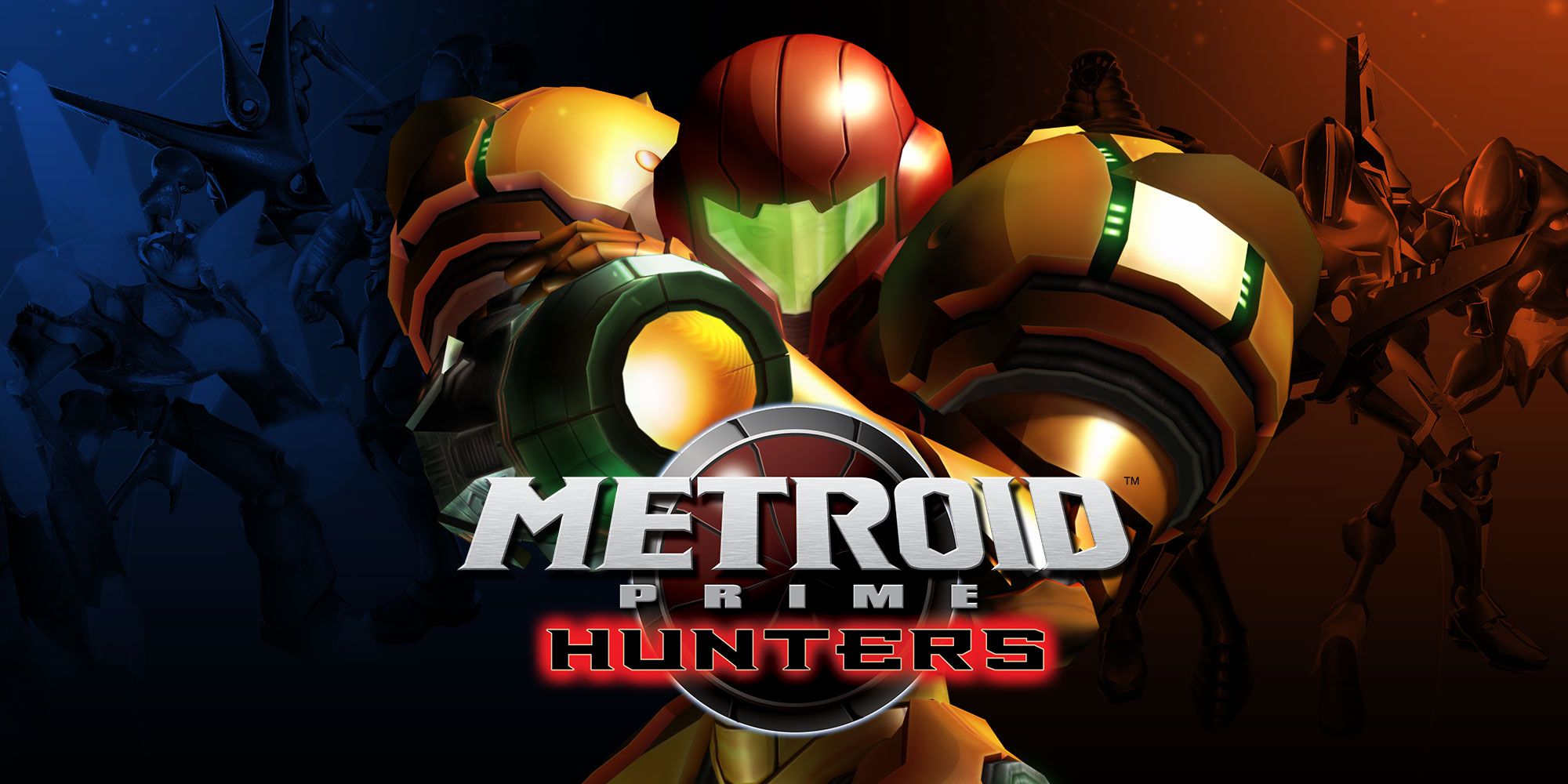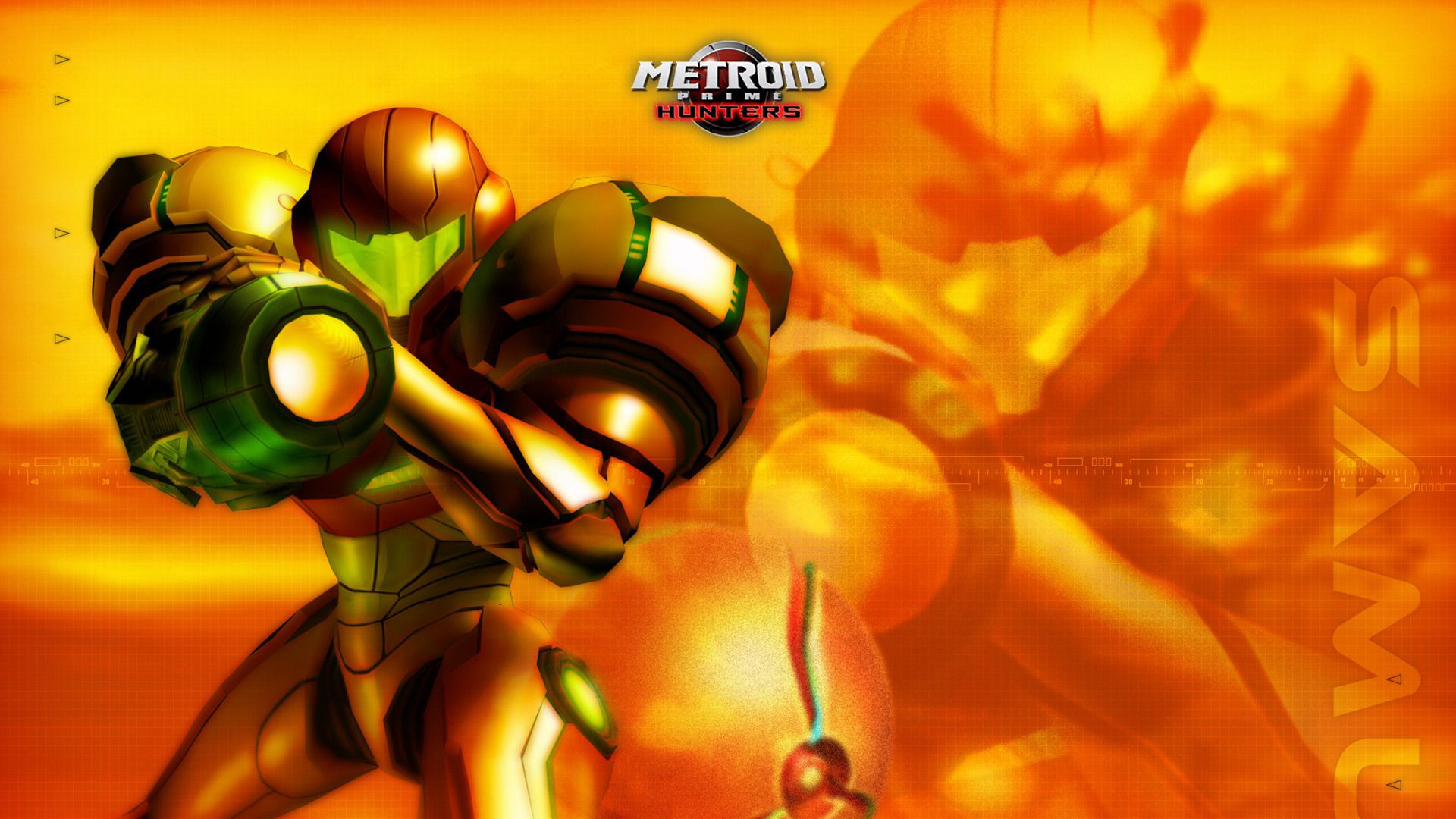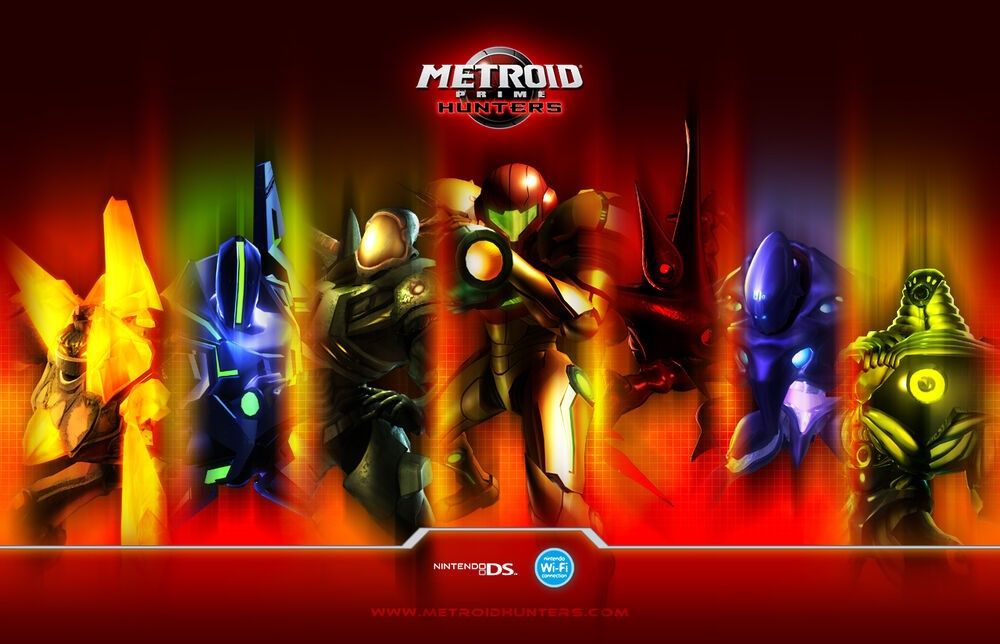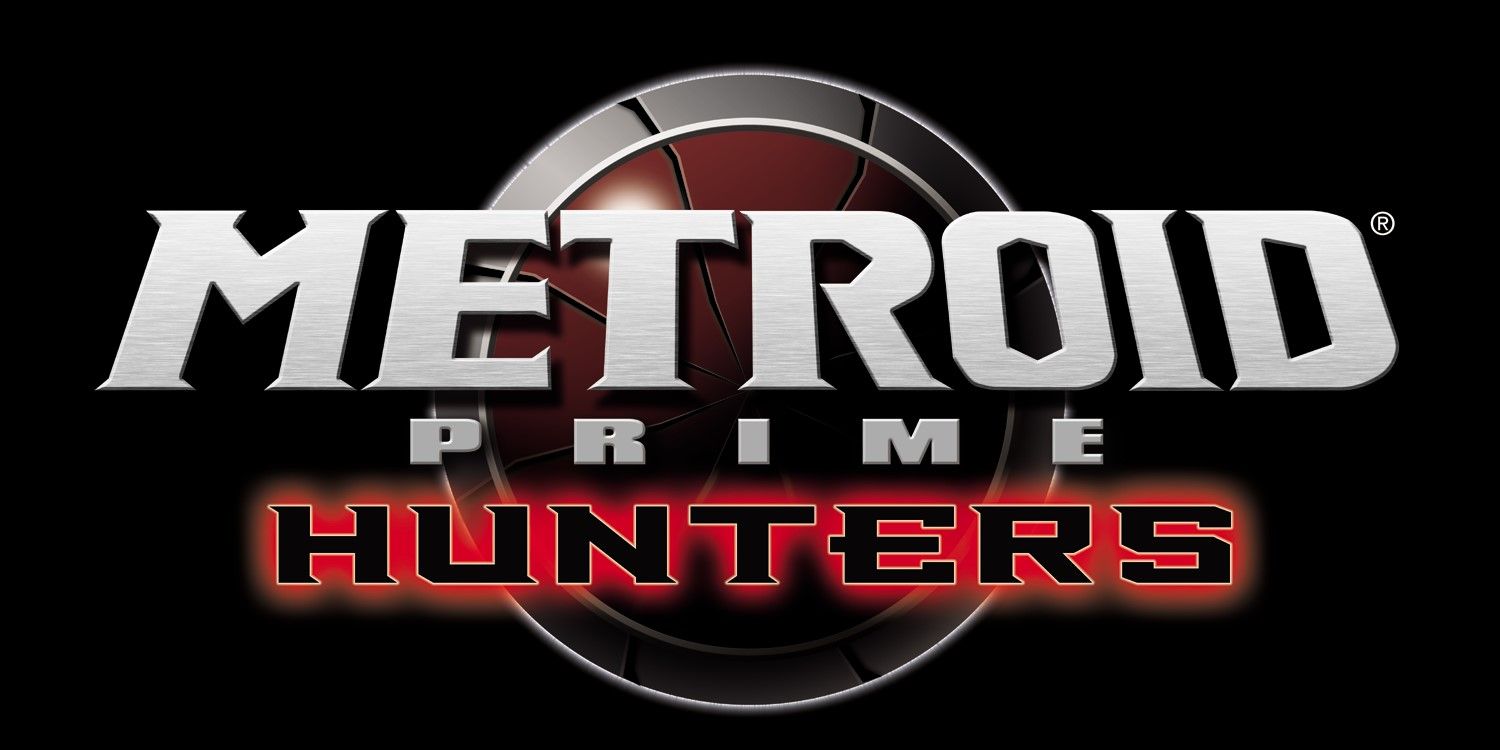The Metroid franchise has seen a very sudden resurgence in popularity as of late thanks to the release of Metroid Dread last year. To many fans, however, the most shocking thing about that game’s reveal was not its existence, but the fact that they had been promised a completely different sequel to the title’s most beloved spin-off, the Metroid Prime series, years earlier, which even now still has not materialized. This sub-series of Metroid games eschews the mainline’s third-person perspective for a much more personal FPS style of gameplay which remarkably works quite well when the main character has a laser cannon for an arm. Despite being an offshoot, the Prime Trilogy is often heralded as some of the best experiences in the entire franchise, but even those that say this tend to forget that there are actually four main Metroid Prime games. And while it is quite different from its siblings, Metroid Prime: Hunters deserves some recognition in its own right.
Technically the third chapter by release date in the Prime series, Prime: Hunters was published in 2006 for the Nintendo DS, though a demo of the game was included with the hardware when it first launched two years prior. Interestingly, despite its relative obscurity nowadays, the game both sold well and received largely positive reviews. Much of the praise was given to the game’s technical achievements, which managed to create a fully 3D environment that ran smoothly on the very limited power of a handheld console.
In terms of Prime: Hunters’ story, the game is canonically set between the first and second of the series’ entries. The setup is that the entire galaxy is sent a telepathic message telling them to come to the Alimbic Cluster if they want the “Ultimate Power.” As seems to be their modus operandi, the Galactic Federation tells Samus to go to the Cluster in their stead and either bring the power back or destroy it, presumedly depending on how galaxy-ending it is.
Metroid's Bounty Hunter Actually Hunts A Bounty
What this premise sets up is actually a distinct rarity in the Metroid games as it makes Samus the bounty hunter actually hunt a bounty. For almost all of her outings in the games, Samus is either following up on the aftermath of a previous journey, crashing on a random hostile planet, or sometimes both. Metroid Prime: Hunters provides a look at how Samus operates when she is simply accomplishing one of the dozens of missions that the lore says she does on a regular basis.
This type of story creates a more adventure-focused experience for the player. Since the vast majority of the game doesn’t have the devastating stakes that typically permeate the narratives of most titles in the Metroid series, the moment-to-moment story beats and the mystery surrounding what all is going on get to take precedent and drive the plot. When this combines with a game mechanic that allows Samus’ rival bounty hunters to steal the Octoliths that she has been amassing if they ever defeat her, the story can start to feel like an Indiana Jones film with the MacGuffins dynamically changing hands and making the journey that much more unique and interesting.
The Hunters Are Some Of Metroid’s Most Interesting Characters
Appropriately for a game named after them, the bounty hunters that Samus contends with during the game’s story are themselves some of the most interesting and underutilized parts of the Metroid world. There are six of them in total - Sylux, Spire, Noxus, Kanden, Weavel, and Trace - and each has their own reasons for seeking out the “Ultimate Power” as well as unique designs and capabilities. With their backstories alone they create numerous corners of the Metroid lore and timeline ripe for exploration.
Probably the most well-known of this rogue’s gallery is the only one who has yet to be forgotten, Sylux. While little about him is known definitively; the fact that he despises the Galactic Federation and by extension, Samus is the one thing upon which everyone can agree. He is the only one of the hunters to appear outside of the confines of the game in which he debuted, though these appearances have been limited exclusively to the briefest of cameos in alternate endings of Metroid Prime 3: Corruption and Metroid Prime: Federation Force. His longevity is attributed to the unique place that his backstory puts him in relation to the Federation and Samus as the unclear reasons behind his intense and personal hatred make his motives mysterious and thus ripe for exploration.
As far as motivations are concerned for the other hunters on offer, Spire, Noxus, and Trace all more or less fall into the same category as they are each representative of their respective races and trying to further a goal related to that. Of these, Trace is by far the most straightforward as he is simply trying to harness the “Ultimate Power” in the name of the militaristic Kriken Empire to which he belongs. The narrative potential of this completely untapped antagonistic force is obviously quite high and considering that Samus has not only had direct dealings with one but also saved his life from the game’s final boss makes for some very interesting possible story hooks.
Noxus falls into a very similar but inverse role as his purpose in the Alimbic Cluster is to use the power it holds to bring peace and justice to the galaxy in the name of his race the Vhozon, though it is implied that their definition of justice is slightly more radical than is typically healthy. As opposed to the previous two, Spire represents his race due to the fact that as far as he knows, he is the only one left. His sole purpose both in Metroid Prime: Hunters and in general is to find out either where his people went or at the very least what their eventual fate was.
Kanden and Weavel are not as interesting for their motivations as they are for their backstories. The former was a failed experiment at creating a bioengineered super-soldier. His mind was destroyed in the testing, but not before he had all the power that he needed to destroy the entire facility that had created him. He’s a dangerous but tragic monster whose sole desire is to hunt, fight and destroy. Meanwhile, Weavel is the only representative of the typically ever-present Space Pirates in Metroid Prime: Hunters. He is an almost entirely cybernetic warrior who was made that way thanks to being on the receiving end of a few too many Power Beam shots from the arm cannon of Samus, herself. Interestingly enough, his motivations for being in the Cluster are never established despite his associations.
Metroid Prime: Hunters' Gameplay Still Holds Up
Even outside of the stellar single-player campaign, Metroid Prime: Hunters actually has yet more to offer in the form of its multiplayer component. This mode would allow up to four people to link together their systems with local or even online Wi-Fi and play what was essentially a boiled-down Halo split-screen multiplayer experience. Each of the game's six hunters were playable alongside Samus provided they had been defeated at least once in the game’s main story, and each one had their own special abilities and transformations that the player could take advantage of.
Even those without a copy of the game could join via the DS Download function, though they would only be able to play as Samus when doing so. Given the game's decent variety of guns, characters, and locations, the experience did not lack for content and even had some unlockables such as the Oubliette map which contained Metroid Prime: Hunters' most powerful weapon, the Omega Cannon. To this day, the entire thing is still an incredibly fun experience, even if the controls are something that need to be readjusted to.
It has been over 15 years since Metroid Prime: Hunters graced the dual screens of the Nintendo DS, but the injustices of time have diminished its impact well more than it deserves. It’s a fantastic addition to both the series it belongs to and the one it came from, that expands upon the lore and gameplay potential in ways that still have yet to be fully explored. And even now with all that’s available, a few multiplayer rounds with some friends are more than worth a bit of dust inhalation.




